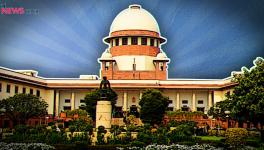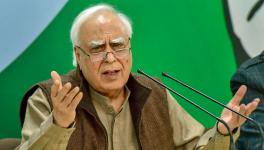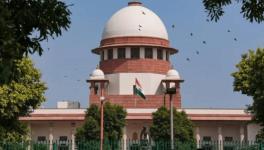The 2G Auction: Rigged to Flop?
The recent auction of the 2G spectrum has drawn bids of only Rs. 9,407 crore. Various spokespersons of the Congress and Union ministers have been propagating that this somehow justifies Raja’s illegal first-come-first-served policy of giving away spectrum.
The 122 licenses awarded by Raja had netted Rs. 9,014 crore. What is hidden in this is the simple fact that even with this “flop” auction, the amount realised in the auction is for less than a fifth of the same spectrum. Further, the spectrum sold in the current auction is only for the circles that have a much lower value – 3 of the circles whose combined reserve price is more than 50% of the total reserve price did not see bids. This high value spectrum still remains with us.
Just to give some facts that do not seem to have appeared in the media. Against 756.84 MHz of spectrum that Raja gave away in 2008, the amount on sale this time was only 366.25 MHz. Only 48.4 % of the total amount given away in 2008 was put up for auction by the government. The Supreme Court has already made its displeasure known on this count, calling this a violation of its directions. Even in this spectrum that was on sale, only 128.75 MHz was actually sold, representing 17% of the amount given away by Raja. If we look at what price Raja gave the same spectrum in 2008, the figures are even more revealing. In Raja’s first-come-first-served policy, for the same spectrum we had got only a measly Rs.1,205 crore in 2008 as against Rs. 9,407 crore this time. Even a “flop” auction has yielded roughly 8 times the revenue when we compare on a like to like basis.
The real question to be asked is why did the auction not draw higher bids? Was there collusion between the industry and the government to keep spectrum prices artificially low?
There is little doubt that whether there was either an explicit or a tacit understanding between the industry and the government that a failed auction would benefit both. For the industry, low price of spectrum obviously helps to keep their costs low. For the UPA government, a low price helps in running down the CAG -- claiming as the Congress ministers and spokespersons are doing -- that the CAG’s estimations of loss for not only telecom but also coal and KG Basin gas are similarly flawed. Currently, the CAG and the government have been on a collision course, particularly on auditing of Reliance and its KG Basin gas field operations. Therefore a failed auction helps in de-legitimising CAG, even if it leads to a big hole in the government’s finances.
In the industry’s case, there are two over-riding reasons why they were willing to sacrifice the opportunity of securing spectrum. The major players – Vodafone and Airtel – got their licenses in 1994-1995, and the license period of 20 years is almost over. Further, they are sitting on additional spectrum beyond the amount bundled with the spectrum, for which they will have to pay prices pegged to the current auction price. A sharp increase in price is therefore not in their interest. Therefore, they had a vested interest in seeing that the auction does not succeed.
This tacit understanding between the government and the industry would have failed if the telecom scenario was like it was in 2008, when Raja gave away the 122 licenses. At that time, the incumbent operators had about 300 million subscribers and the telecom market was really taking off. In the last 4 years, we have added another 600 million subscribers – the market has expanded to 3 times its size from 2008. TRAI figures indicate that now the market is no longer expanding -- in 2012 for the first time there has been some drop in mobile subscribers. It is no longer possible to think about building a new mobile business in India by attracting new subscribers. That window of opportunity that was open in 2008 for attracting new players has now closed.
The only parties who would now be interested in securing spectrum are the existing operators, who already have the necessary subscribers. For them, the cost of adding new spectrum has to be balanced against its impact on the additional spectrum that they hold and the prices they have to pay when their current licenses expire. Therefore, at this point of time, they were far more interested in the spectrum prices remaining low. The only parties that were interested in the spectrum were parties like Telenor (now Telewings), Videocon and Ideas, who had secured spectrum in Raja’s spectrum give away and needed it to continue their business.
Why did the high-end circles – Delhi, Mumbai and Karnataka – 3 circles that collectively was worth more than 50% of the total reserve price of Rs. 14,000 crore for an all-India license not find any bidders?
Here, Kapil Sibal, the Minister for Communications & IT is directly responsible. He has been talking about making roaming “free”, read having the same cost as a local call. What does this mean? It means that a mobile number in any part of the country can be used in any other part without incurring any higher costs. This implies that a license-holder no longer has to pay high license fees for a high-value circle such as Delhi. Instead, he can pick up a cheap license in any part of the country, issue it as an all India roaming phone including for Delhi and his subscribers would still have the same rates as a Delhi phone. This is the surest way of seeing that high value circles see no takers as there is now no particular reason why parties should secure licenses for them. Any license for any part of the country would serve the same purpose.
Not surprisingly then, the high-value circles found no takers. The parties that do not have licenses for these circles do not need it if Sibal’s free roaming is allowed from next year. The existing players in these circles do need extra spectrum, but will wait till the prices drop. In any case, it impacts only their quality of service and not their bottom lines. The subscribers will continue to suffer with dropped calls and poor coverage, but who cares for the subscribers any way?
The issue of roaming is not well understood by the lay public and even those who cover the telecom beat in the media. In mobile telephony, every subscriber is presumed to have a home circle, where he uses the infrastructure of the company from whom he is getting the service. It is only when he goes outside his home circle that he uses the network of other companies – he is roaming or is guest on a network that is not the network of the company from whom he is getting his service. He pays for these guest services to his operator as roaming charges, who in turn settles the costs of such services with the other network operators whose facilities were utilised.
Raja destroyed this concept of “home” network and “other” networks by introducing the concept of intra-circle roaming. This meant that even in an area that is supposedly covered by the subscribers’ home network, a subscriber could use other networks. This was done explicitly to help the new entrants such as Unitech and Swan Telecom, who had secured licenses from Raja and wanted to sell them without spending any money on building infrastructure. Raja introduced intra circle roaming and forced BSNL to allow other company’s subscribers to “roam” on its network so that company’s like Unitech and Swan could acquire subscribers with just their licenses. This is what helped them when they sold the licenses – they not only had licenses but also subscribers, making them more valuable for selling either their companies or shares in their companies.
Unfortunately, Sibal is continuing with Raja’s work on destroying the value of licenses with devaluing the concept of a home circle further. If Raja did away with the concept of a home network for a circle, Sibal now wants to do away with the concept of a home circle itself. If my subscriber can roam in the entire country with free roaming, why would I as a company need an All-India license and put up infrastructure anywhere?
Could the auction have been handled better? In other words, did the government purposely rig the auction to fail? Apart from promoting the idea of a free-roaming. Yes. It could have kept lower reserve prices which would certainly have seen a larger number of bids. It was clear from day one that under the current conditions of the telecom market, these reserve prices were unrealistic and therefore lower starting prices would have helped. The government had a two-fold objective here. It wanted lower prices also but before lowering the prices, wanted to show that CAG’s figures of presumptive losses are wrong. Hence the need for a high reserve price, the claim of a flop and then lowering of prices to help the industry – this is the strategy that the government has chosen.
What should now be done that we now know the current market condition will not sustain such prices? I would argue that we should in fact not be hasty in reducing spectrum prices but should hold on to this spectrum. There are two reasons for this. One is that though the voice market for mobile telephony has saturated, the data market has yet to pick up. Almost the entire revenue of mobile companies now comes from voice end of the market. Only when the data market picks up – and in India it will, as a number of people will access the internet through their mobiles – the spectrum will again become valuable. Let us not forget that spectrum is awarded for 20 years. Waiting a couple of years now is better than giving it at lower rates under the depressed conditions of the market.
Contrary to what the UPA ministers and Congress spokespersons are saying, the “flop” auction does not justify Raja’s policies or that CAG’s calculations were wrong. All it shows that the loss that Raja inflicted on the exchequer is a permanent one as the window of opportunity that India had then in attracting new players has now closed. And the responsibility for inflicting this loss on the public exchequer is not of Raja alone; Manmohan Singh and Chidambaram are also collectively responsible for this permanent loss.
Get the latest reports & analysis with people's perspective on Protests, movements & deep analytical videos, discussions of the current affairs in your Telegram app. Subscribe to NewsClick's Telegram channel & get Real-Time updates on stories, as they get published on our website.
























